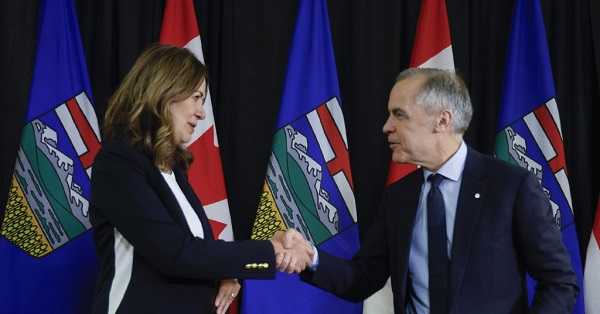Economy
Historic decline in Canadian living standards officially reaches five-year mark

From the Fraser Institute
By Jake Fuss and Grady Munro
Indeed, according to a recent study, from the middle of 2019 to the end of 2023, GDP per person fell from $59,905 to $58,134—a 3.0 per cent drop over four and a half years.
On Friday, Statistics Canada released its estimate of gross domestic product (GDP) for the second quarter of 2024, which confirmed that despite growth in the overall economy, individual living standards for Canadians declined once again. As a result, the ongoing decline in Canadian living standards has officially reached the five-year mark.
GDP—the final value of all goods and services produced in the economy and the most widely used measure of overall economic activity—grew by 0.5 per cent from April to June of 2024 (after adjusting for inflation). But while the economy continues to grow in the aggregate, inflation-adjusted GDP per person—a broad measure of individual living standards that adjusts for population—actually fell by 0.1 per cent during the second quarter of 2024, down to $58,005.
In other words, while the overall economy is growing, individual living standards are falling. This apparent disconnect is due to Canada’s growing population, and the fact that the rate of economic growth is not fast enough to account for the amount the population has increased. Specifically, while the economy grew by 0.5 per cent from April to June of 2024, the total population grew by 0.6 per cent (or 242,673 people).
These data confirm that Canadians are still suffering a historic decline in living standards.
Indeed, according to a recent study, from the middle of 2019 to the end of 2023, GDP per person fell from $59,905 to $58,134—a 3.0 per cent drop over four and a half years. This was the second-longest and third-deepest decline in living standards since 1985, and was only exceeded in both respects by a decline that lasted more than five years (from June 1989 to September 1994).
Unfortunately for Canadians, this recent decline in living standards persisted through the first three months of 2024, and now the newest data show the decline has continued into the second quarter of 2024. Therefore, as of June 2024, inflation-adjusted GDP per person stood 3.2 per cent below the level it was in the middle of 2019. Again, despite a few brief quarters of positive per-person economic growth since 2019, the general decline in inflation-adjusted GDP has officially reached the five-year mark.
Due to the continued persistence of weak economic growth combined with remarkable population increases, Canadians have suffered a marked and prolonged decrease in living standards over the last five years. This puts Canada just six months away from experiencing the longest decline in individual living standards of the last 40 years—a milestone no one should be eager to reach.
Authors:
Business
Socialism vs. Capitalism

People criticize capitalism. A recent Axios-Generation poll says, “College students prefer socialism to capitalism.”
Why?
Because they believe absurd myths. Like the claim that the Soviet Union “wasn’t real socialism.”
Socialism guru Noam Chomsky tells students that. He says the Soviet Union “was about as remote from socialism as you could imagine.”
Give me a break.
The Soviets made private business illegal.
If that’s not socialism, I’m not sure what is.
“Socialism means abolishing private property and … replacing it with some form of collective ownership,” explains economist Ben Powell. “The Soviet Union had an abundance of that.”
Socialism always fails. Look at Venezuela, the richest country in Latin America about 40 years ago. Now people there face food shortages, poverty, misery and election outcomes the regime ignores.
But Al Jazeera claims Venezuela’s failure has “little to do with socialism, and a lot to do with poor governance … economic policies have failed to adjust to reality.”
“That’s the nature of socialism!” exclaims Powell. “Economic policies fail to adjust to reality. Economic reality evolves every day. Millions of decentralized entrepreneurs and consumers make fine tuning adjustments.”
Political leaders can’t keep up with that.
Still, pundits and politicians tell people, socialism does work — in Scandinavia.
“Mad Money’s Jim Cramer calls Norway “as socialist as they come!”
This too is nonsense.
“Sweden isn’t socialist,” says Powell. “Volvo is a private company. Restaurants, hotels, they’re privately owned.”
Norway, Denmark and Sweden are all free market economies.
Denmark’s former prime minister was so annoyed with economically ignorant Americans like Bernie Sanders calling Scandanavia “socialist,” he came to America to tell Harvard students that his country “is far from a socialist planned economy. Denmark is a market economy.”
Powell says young people “hear the preaching of socialism, about equality, but they don’t look on what it actually delivers: poverty, starvation, early death.”
For thousands of years, the world had almost no wealth creation. Then, some countries tried capitalism. That changed everything.
“In the last 20 years, we’ve seen more humans escape extreme poverty than any other time in human history, and that’s because of markets,” says Powell.
Capitalism makes poor people richer.
Former Rep. Jamaal Bowman (D-N.Y.) calls capitalism “slavery by another name.”
Rep. Alexandria Ocasio-Cortez (D-N.Y.) claims, “No one ever makes a billion dollars. You take a billion dollars.”
That’s another myth.
People think there’s a fixed amount of money. So when someone gets rich, others lose.
But it’s not true. In a free market, the only way entrepreneurs can get rich is by creating new wealth.
Yes, Steve Jobs pocketed billions, but by creating Apple, he gave the rest of us even more. He invented technology that makes all of us better off.
“I hope that we get 100 new super billionaires,” says economist Dan Mitchell, “because that means 100 new people figured out ways to make the rest of our lives better off.”
Former Labor Secretary Robert Reich advocates the opposite: “Let’s abolish billionaires,” he says.
He misses the most important fact about capitalism: it’s voluntary.
“I’m not giving Jeff Bezos any money unless he’s selling me something that I value more than that money,” says Mitchell.
It’s why under capitalism, the poor and middle class get richer, too.
“The economic pie grows,” says Mitchell. “We are much richer than our grandparents.”
When the media say the “middle class is in decline,” they’re technically right, but they don’t understand why it’s shrinking.
“It’s shrinking because more and more people are moving into upper income quintiles,” says Mitchell. “The rich get richer in a capitalist society. But guess what? The rest of us get richer as well.”
I cover more myths about socialism and capitalism in my new video.
Business
Residents in economically free states reap the rewards
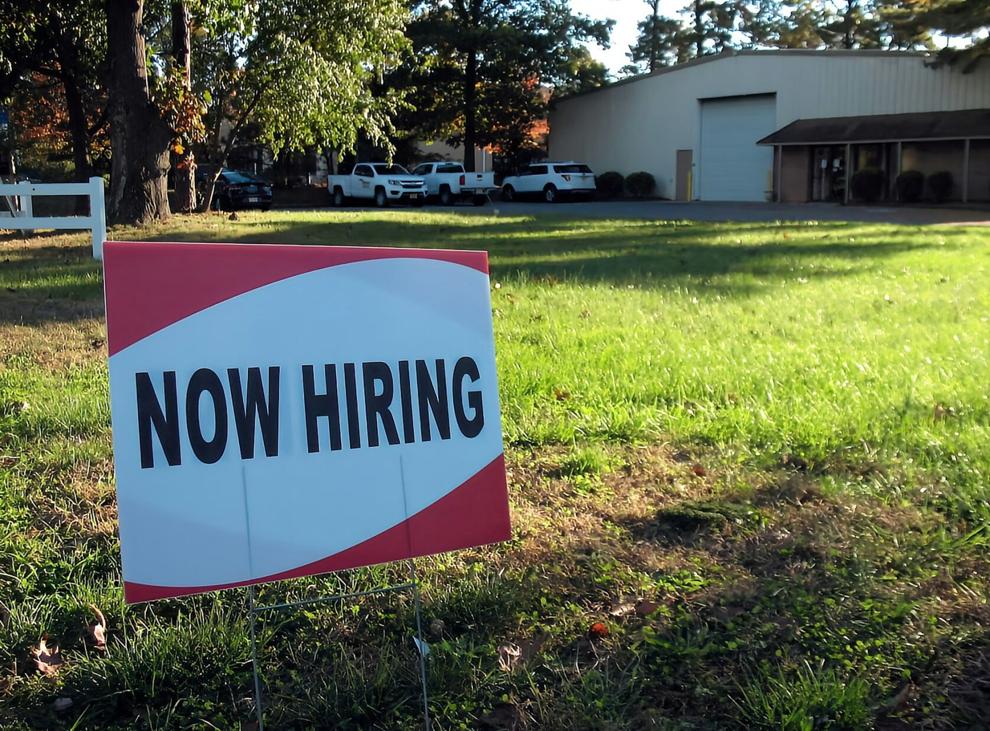
From the Fraser Institute
A report published by the Fraser Institute reaffirms just how much more economically free some states are compared with others. These are places where citizens are allowed to make more of their economic choices. Their taxes are lighter, and their regulatory burdens are easier. The benefits for workers, consumers and businesses have been clear for a long time.
There’s another group of states to watch: “movers” that have become much freer in recent decades. These are states that may not be the freest, but they have been cutting taxes and red tape enough to make a big difference.
How do they fare?
I recently explored this question using 22 years of data from the same Economic Freedom of North America index. The index uses 10 variables encompassing government spending, taxation and labour regulation to assess the degree of economic freedom in each of the 50 states.
Some states, such as New Hampshire, have long topped the list. It’s been in the top five for three decades. With little room to grow, the Granite State’s level of economic freedom hasn’t budged much lately. Others, such as Alaska, have significantly improved economic freedom over the last two decades. Because it started so low, it remains relatively unfree at 43rd out of 50.
Three states—North Carolina, North Dakota and Idaho—have managed to markedly increase and rank highly on economic freedom.
In 2000, North Carolina was the 19th most economically free state in the union. Though its labour market was relatively unhindered by the state’s government, its top marginal income tax rate was America’s ninth-highest, and it spent more money than most states.
From 2013 to 2022, North Carolina reduced its top marginal income tax rate from 7.75 per cent to 4.99 per cent, reduced government employment and allowed the minimum wage to fall relative to per-capita income. By 2022, it had the second-freest labour market in the country and was ninth in overall economic freedom.
North Dakota took a similar path, reducing its 5.54 per cent top income tax rate to 2.9 per cent, scaling back government employment, and lowering its minimum wage to better reflect local incomes. It went from the 27th most economically free state in the union in 2000 to the 10th freest by 2022.
Idaho saw the most significant improvement. The Gem State has steadily improved spending, taxing and labour market freedom, allowing it to rise from the 28th most economically free state in 2000 to the eighth freest in 2022.
We can contrast these three states with a group that has achieved equal and opposite distinction: California, Delaware, New Jersey and Maryland have managed to decrease economic freedom and end up among the least free overall.
What was the result?
The economies of the three liberating states have enjoyed almost twice as much economic growth. Controlling for inflation, North Carolina, North Dakota and Idaho grew an average of 41 per cent since 2010. The four repressors grew by just 24 per cent.
Among liberators, statewide personal income grew 47 per cent from 2010 to 2022. Among repressors, it grew just 26 per cent.
In fact, when it comes to income growth per person, increases in economic freedom seem to matter even more than a state’s overall, long-term level of freedom. Meanwhile, when it comes to population growth, placing highly over longer periods of time matters more.
The liberators are not unique. There’s now a large body of international evidence documenting the freedom-prosperity connection. At the state level, high and growing levels of economic freedom go hand-in-hand with higher levels of income, entrepreneurship, in-migration and income mobility. In economically free states, incomes tend to grow faster at the top and bottom of the income ladder.
These states suffer less poverty, homelessness and food insecurity and may even have marginally happier, more philanthropic and more tolerant populations.
In short, liberation works. Repression doesn’t.
-
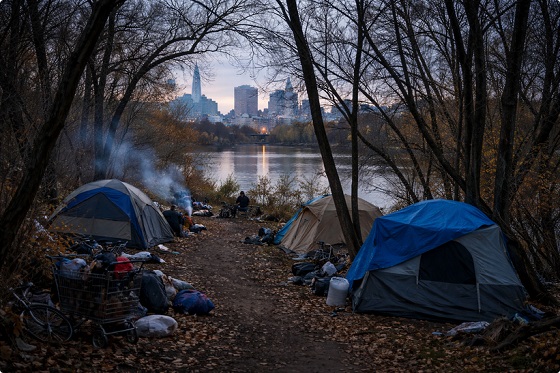
 Frontier Centre for Public Policy1 day ago
Frontier Centre for Public Policy1 day agoTent Cities Were Rare Five Years Ago. Now They’re Everywhere
-

 Bruce Dowbiggin6 hours ago
Bruce Dowbiggin6 hours agoBe Careful What You Wish For In 2026: Mark Carney With A Majority
-

 International14 hours ago
International14 hours agoNo peace on earth for ISIS: Trump orders Christmas strikes after Christian massacres
-
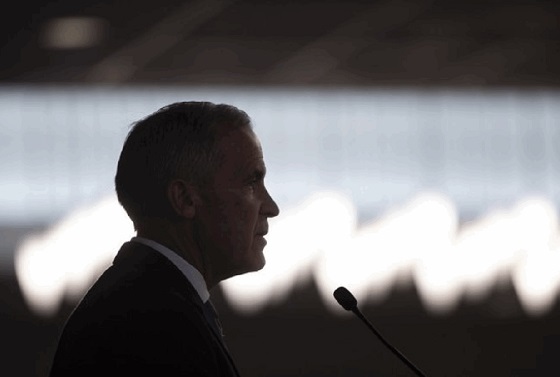
 Fraser Institute15 hours ago
Fraser Institute15 hours agoCarney government sowing seeds for corruption in Ottawa
-
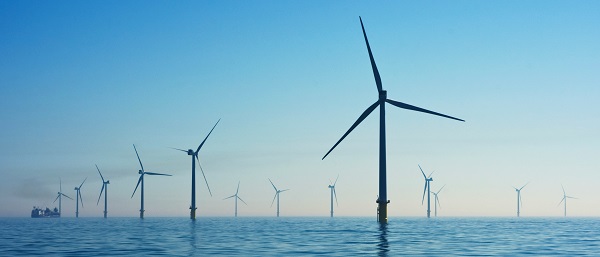
 Daily Caller14 hours ago
Daily Caller14 hours agoUS Halts Construction of Five Offshore Wind Projects Due To National Security
-

 Alberta15 hours ago
Alberta15 hours agoAlberta Next Panel calls for less Ottawa—and it could pay off
-

 Energy15 hours ago
Energy15 hours agoWhile Western Nations Cling to Energy Transition, Pragmatic Nations Produce Energy and Wealth
-

 Opinion1 day ago
Opinion1 day agoPope Leo XIV’s Christmas night homily





